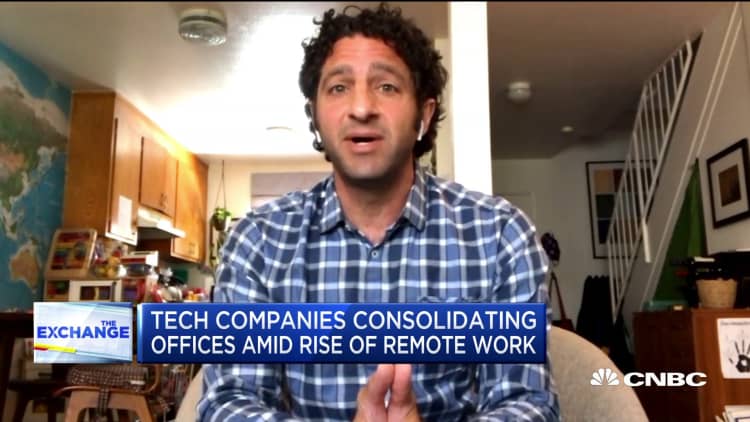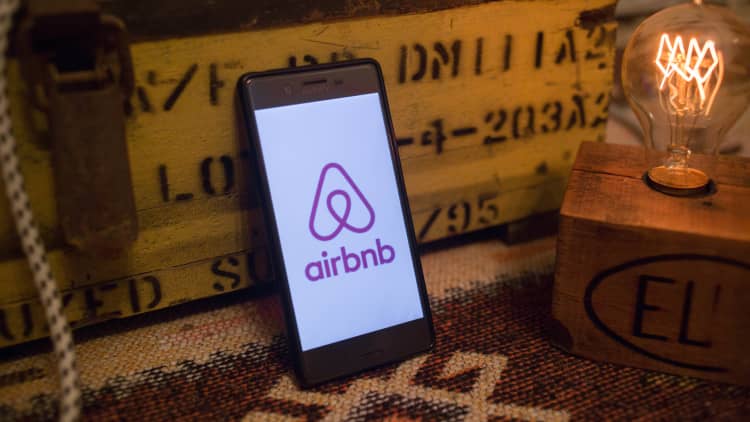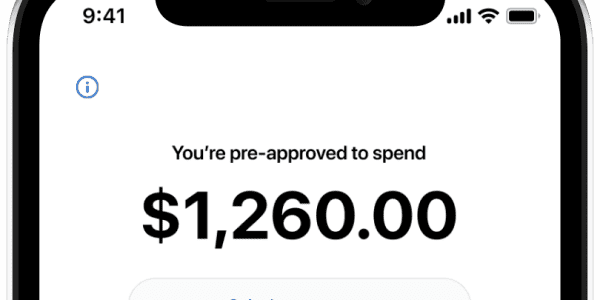In the wake of the coronavirus pandemic, the range of on-demand solutions and options available to budget-minded business owners is increasing, thanks to the rise of online marketplaces, affordably priced cloud apps and freelance gig sites.
Now, at a fraction of typical costs and sometimes even for free, you can get virtually anything you need, from video to SEO or marketing help: Graphic design services starting at $5. Email marketing for a handful of cents. Sprawling libraries full of stock photos, free for commercial use. Professionally crafted websites that anyone can quickly get up and running beginning at $2 a pop.
The gig economy's moment has arrived, and all those pennies now flowing to nontraditional sources are quickly adding up to create many more opportunities for businesses as well as everyday working professionals, especially those seeking a new side hustle.
More than 57 million Americans (representing 35% of the US workforce) freelanced last year, per nonprofit advocacy organization Freelancers Union. Likewise, over 6 million skilled gig workers are now operating just in America's top 30 cities alone, according to online freelance marketplace Fiverr.com's annual Freelance Economic Impact Report, conducted in partnership with Rockbridge Associates.
According to the report, 6 in 10 freelancers expect to earn as much or more than they did in 2019, which amounted to a collective $150 billion.
Outsourcing is the new in-house
Coupled with the continuing rise in remote work prompted by Covid-19, along with industry growth that's compounding by double or even triple digits in select global territories, it's not only clear that gig work now enjoys greater prominence than ever before, it's also becoming increasingly apparent that outsourcing is quickly becoming the new in-house.
"I don't know why anyone would build most business platforms or websites [from scratch] anymore," says Joseph Olin, executive director for the Video Game Bar Association, which represents legal practitioners in the interactive entertainment space. "The biggest challenge for most businesses is simply deciding which solutions provider to choose from."

As a result, working professionals and organizations seeking on-demand alternatives to traditional business arrangements and solutions are finding it increasingly simple to collaborate and connect. "With the expansion and globalization of gig platforms, talented professionals from around the world can offer their services to a much wider audience of potential clients," says Brie Weiler Reynolds, career development manager for FlexJobs, which has created a guide to popular freelance and gig economy job platforms. "These platforms can allow for much quicker transactions and collaborations and have a streamlining effect on the whole [project development and innovation] process."
Freelance marketplaces and the gig economy are becoming part of the new normal.
"In the future, we'll think in terms of 'platform economies' [vs. marketplaces]," says Hugh Durkin, director of product development for marketing, sales and customer service software provider HubSpot. "Because of the much lower costs [associated with using these solutions], it's not uncommon for bootstrapped, self-funded businesses to become more meaningful in terms of revenue."
Opportunities in every category and age group
It's not just budding entrepreneurs who are finding creative ways to assemble ragtag teams of freelance superstars and stretch every dollar further. Perhaps the most telling signs of sea change lie in corporate America's growing embrace of on-demand and outsourcing practices, with the share of gig workers at U.S businesses having ballooned 15% since 2010, according to the ADP Research Institute.
During the pandemic, it's provided an easy way for many clients, including Fortune 500 firms, to fill in creative gaps and source specific film footage that would otherwise be tough to produce while under stay-at-home orders.Andrew Krausefounder of marketing communications firm AKA
Over 30% of 1099-MISC contractors doing gig-based work now are over age 55, pointing to growing opportunities for working professionals in every category and age group. But nowhere is the growth potential in the space greater than for small businesses, who are increasingly turning to freelance marketplaces and online sites to outsource (or crowdsource) common day-to-day tasks for pennies on the dollar. And whether they need help with social media management or professional voice-overs, drop shipping or app development, countless entrepreneurs across the globe are quickly adding these solutions to their list of go-to resources.
"Although we're a 22-year-old business, we consistently use stock image, music and video providers," says Andrew Krause, founder of marketing communications firm AKA. "During the pandemic, it's provided an easy way for many clients, including Fortune 500 firms, to fill in creative gaps and source specific film footage that would otherwise be tough to produce while under stay-at-home orders, let alone quickly."
Managing the troops
Krause cautions, though, that while freelance creatives provide solutions and are a great way to outsource time-sensitive work or fill in any specific skills gaps that your company may have, results can vary. "It takes a skilled hand to assemble and watch over people."
The key to being successful, he says, is simply to be clear with freelance providers about what your project needs are. Likewise, it's important to vet freelancers' capabilities and work portfolio upfront, establish clear deadlines and milestones, and keep a close eye on project management.
Andrew Vine, head of professional speaking agency The Insight Bureau, said his company uses freelance marketplaces, off-the-shelf templates and online tools to outsource and streamline many aspects of its operations. "We use Upwork.com [freelance] staff to take on ad hoc projects in a way that temporary agencies could never accommodate, sites like SurveyMonkey to source customer feedback, and Zoho CRM [sales software] to handle customer relationship management," he says. "Similarly, we use solutions such as Calendly to [manage our schedule] and avoid the Ping-Pong match involved in setting up appointments. There are plenty of affordable, web-based solutions that help us remain agile."

Michael Morgenstern, senior vice president of marketing for expert witness provider The Expert Institute says they relied on several free resources to grow and scale their business. "We use Trello to manage our projects, Brainlabs' open-source scripts to automate certain high-tech actions, and Unsplash.com is our go-to resource for free, high-quality stock imagery."
Agile and affordable solutions such as these can often be a vital go-to resource for start-ups and other, bootstrapped ventures, helping lower barriers to market entry and offer the tools needed to compete with larger firms. Ironically though, with so many outsourced and on-demand options now available, and just a click away, the biggest challenge for many businesses is simply picking the right ones.
Happily, say many executives, it's a good problem to have, even if the options can sometimes prove overwhelming.
5 tips to ensure success when using freelance marketplaces
If you're looking to get started yourself, some online marketplaces where you can find freelancers or on-demand services include Fiverr, FlexJobs, Freelancer.com, Guru, Toptal and Upwork. Yet there are a few things to keep in mind when starting out, says Brent Messenger, vice president of public policy and community engagement at Fiverr. Knowing these will ensure a more successful outsourcing experience.
- When hiring from a global marketplace, be aware of different time zones and where freelancers are based so you can ensure that you communicate effectively on the timeline of the project and expected deadline.
- Do your homework and thoroughly review each freelancer's portfolio, and be sure to read comments and reviews. Likewise, research how the freelancer has been rated by previous clients. This will help you build a better understanding of what they offer, how they work and their past results.
- Be clear on your expectations. Freelancers are required to be clear on what they deliver, but it's the responsibility of the buyer to be clear in terms of defining what they need upfront.
- Hold regular check-ins to ensure that each project is progressing as anticipated, and address any questions either of you may have.
- Work with freelancers as if you were working in an office, where you'd expect to keep an open and professional line of communication about how things are going.
If you're looking for help with online automation, or stock assets such as photos, images and plug-and-play solutions, the following sites can also be of service. Some may offer assets and solutions for free, others for a nominal fee or on a subscription basis.
Email and newsletter marketing: AWeber, Constant Contact, Drip, GetResponse, HubSpot, iContact, MailChimp, SendInBlue
Photos and videos: Unsplash, Shutterstock, StockSnap.io, DepositPhotos, Videezy, VideoHive
Logos, graphics and branding: Crowdspring, 99Designs, Behance, Canva, Easil, Adobe Spark
Web design and development: Shopify, Squarespace, Wix, WordPress, GoDaddy, TemplateMonster, ThemeForest






